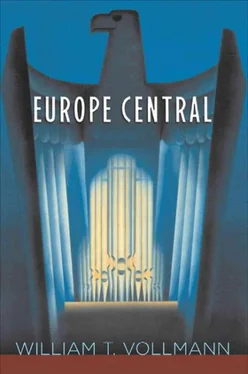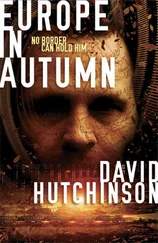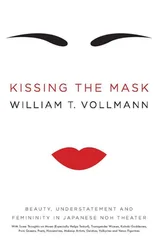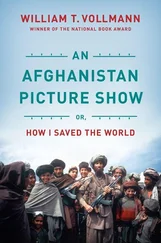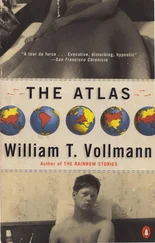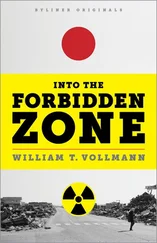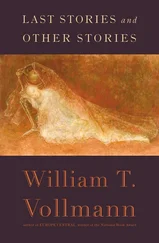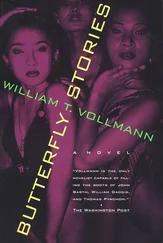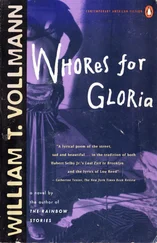Meagan Atiyeh said nice things about the stories and encouraged me to keep working on them. I have the happiest memories of our time together. When she praised the stories, that meant the world to me. She kept me company in several European venues. I wish I could better express how kind and calm and steady she was, how pleasant it was for me to rush off another story to her, to share with her my latest Stalinist verbal tic, to search with her for old German newspapers or new Russian books. She will always be special to me.
Mandy Aftel, Jenny Ankeny, Amel Boussoualim, Moira Brown, Kate Danaher, Jake Dickinson, Takako Kawai, Paula Keyth, Mayumi Kobana, Mechelle Lee, William Linne, Larry McCafferey, Shannon Mullen, Lori Nelson, Ben Pax, Terrie Petree, Vanessa Renwick, Tom Robinson, Deborah Triesman and Becky Wilson were very supportive, both to this book and to me, during a difficult time.
I would like to thank Paul Slovak, Susan Golomb, Amira Pierce, Kim Goldstein and Sabine Hrechdakian for their work on Europe Central . And I am very lucky that Carla Bolte is the designer for this book. This fine, gentle, intelligent woman has also been a patient friend and confidante for a number of years. Carla, thank you so much for caring about me.
Lizzy Kate Gray expertly advised me on some matters of musical terminology and instrumentation connected with the Shostakovich stories. I will always be grateful to her for the times we listened together to the selections I was studying of the Seventh, the Eighth, the Fourteenth, Opus 110 and the Preludes and Fugues. Her father Gary and I had a nice chat about the pitch of World War II airplanes.

ALSO BY WILLIAM T. VOLLMANN
You Bright and Risen Angels
The Rainbow Stories
The Ice-Shirt
Thirteen Stories and Thirteen Epitaphs
Whores for Gloria
Fathers and Crows
Butterfly Stories
The Rifles
An Afghanistan Picture Show
The Atlas
The Royal Family
Argall
Rising Up and Rising Down
VIKING
Published by the Penguin Group
Penguin Group (USA) Inc., 375 Hudson Street, New York, New York 10014, U.S.A. ■ Penguin Group (Canada), 10 Alcorn Avenue, Toronto, Ontario, Canada M4V 3B2 (a division of Pearson Penguin Canada Inc.) ■ Penguin Books Ltd, 80 Strand, London WC2R 0RL, England ■ Penguin Ireland, 25 St. Stephen’s Green, Dublin 2, Ireland (a division of Penguin Books Ltd) ■ Penguin Books Australia Ltd, 250 Camberwell Road, Camberwell, Victoria 3124, Australia (a division of Pearson Australia Group Pty Ltd) ■ Penguin Books India Pvt Ltd, 11 Community Centre, Panchsheel Park, New Delhi - 110 017, India ■ Penguin Group (NZ), Cnr Airborne and Rosedale Roads, Albany, Auckland 1310, New Zealand (a division of Pearson New Zealand Ltd) ■ Penguin Books (South Africa) (Pty) Ltd, 24 Sturdee Avenue, Rosebank, Johannesburg 2196, South Africa
Penguin Books Ltd, Registered Offices: 80 Strand, London WC2R 0RL, England
First published in 2005 by Viking Penguin, a member of Penguin Group (USA) Inc.
Copyright © William T. Vollmann, 2005
All rights reserved
Portions of this work first appeared in Conjunctions, Grand Street, Film Comment, The New Yorker, The Paris Review, and Expelled from Eden: A William T. Vollmann Reader, edited by William T. Vollmann, Larry McCaffery, and Michael Hemmingson (Thunder’s Mouth Press, 2005).
PUBLISHER’S NOTE
This is a work of fiction. Names, characters, places, and incidents either are the product of the author’s imagination or are used fictitiously, and any resemblance to actual persons, living or dead, business establishments, events, or locales is entirely coincidental.
LIBRARY OF CONGRESS CATALOGING-IN-PUBLICATION DATA
Vollmann, William T.
Europe central / by William T. Vollmann. p. cm.
eISBN : 978-1-101-11819-1
1. Germany—Social life and customs—Fiction. 2. Soviet Union—Social life and customs—Fiction. I. Title.
PS3572.O395E97 2005
813’.54—dc22 2004061170
This book is printed on acid-free paper. 
Map by the author
Without limiting the rights under copyright reserved above, no part of this publication may be reproduced, stored in or introduced into a retrieval system, or transmitted, in any form or by any means (electronic, mechanical, photocopying, recording, or otherwise), without the prior written permission of both the copyright owner and the above publisher of this book.
The scanning, uploading, and distribution of this book via the Internet or via any other means without the permission of the publisher is illegal and punishable by law. Please purchase only authorized electronic editions and do not participate in or encourage electronic piracy of copyrightable materials. Your support of the author’s rights is appreciated.
http://us.penguingroup.com
If this organism does in fact reside in Moscow, then I presume that the cranial casing partakes of Soviet duralumin—an excellent variety, called kol’chugaliuminii, which was developed by Iu. G. Muzalevskii and S. M. Voronov.
Exegesis easily uncovers other ironies: The purple-cloaked priest, it is written, was as exasperated as his victims, because this marriage prevented him from renting the extra room of Lenin’s house which the bride and her mother would now occupy. (Had she remained unmarried, Krupskaya would have been remanded to the locality of Ufa.) And perhaps he scented the godlessness of the convict spouses. What must he have made of Krupskaya’s abashedness, Lenin’s sarcastic smiles? How might he have proceeded, had he understood that this church of his, by sealing the union of these two helpmeets, was hastening its own destruction, and his?
Upon his own escape from Siberia to England in 1902, Trotsky had likewise found them working in separate quarters. “Nadyezhda Konstantinovna Krupskaya… was at the very centre of all the organization work,” he writes in his memoirs. “In her room there was always a smell of burned paper from the secret letters she heated over the fire to read.”
Blind faith, one might say. In Siberia she went literally and mysteriously blind for three years, but upon her blindness was engraved the secret alphabet of her cause. Under the influence of the terrorist Spiridovna, she swore to be patient, and someday to execute justice. And then, as if by magic, the world revealed itself once more to her sight.
Arguably Fanya Kaplan had, as exegetes like to say, “wrought better than she knew,” since the bullet remaining in Volodya’s neck proved to be a time bomb. Nearly three years later, the doctors finally decided to remove it, and although the operation was a success, scarcely two days later he suffered the first of the cerebral hemorrhages which were to carry him off.
Job 3:25.
Proverbs 16:33.
Literally, SHEKHINAH, the female aspect of Jehovah.
R. H. McNeal in his drily reliable Bride of the Revolution goes so far as to write that very likely Krupskaya lived out her life in the consoling belief that Fanya Kaplan was alive in jail.
Читать дальше
